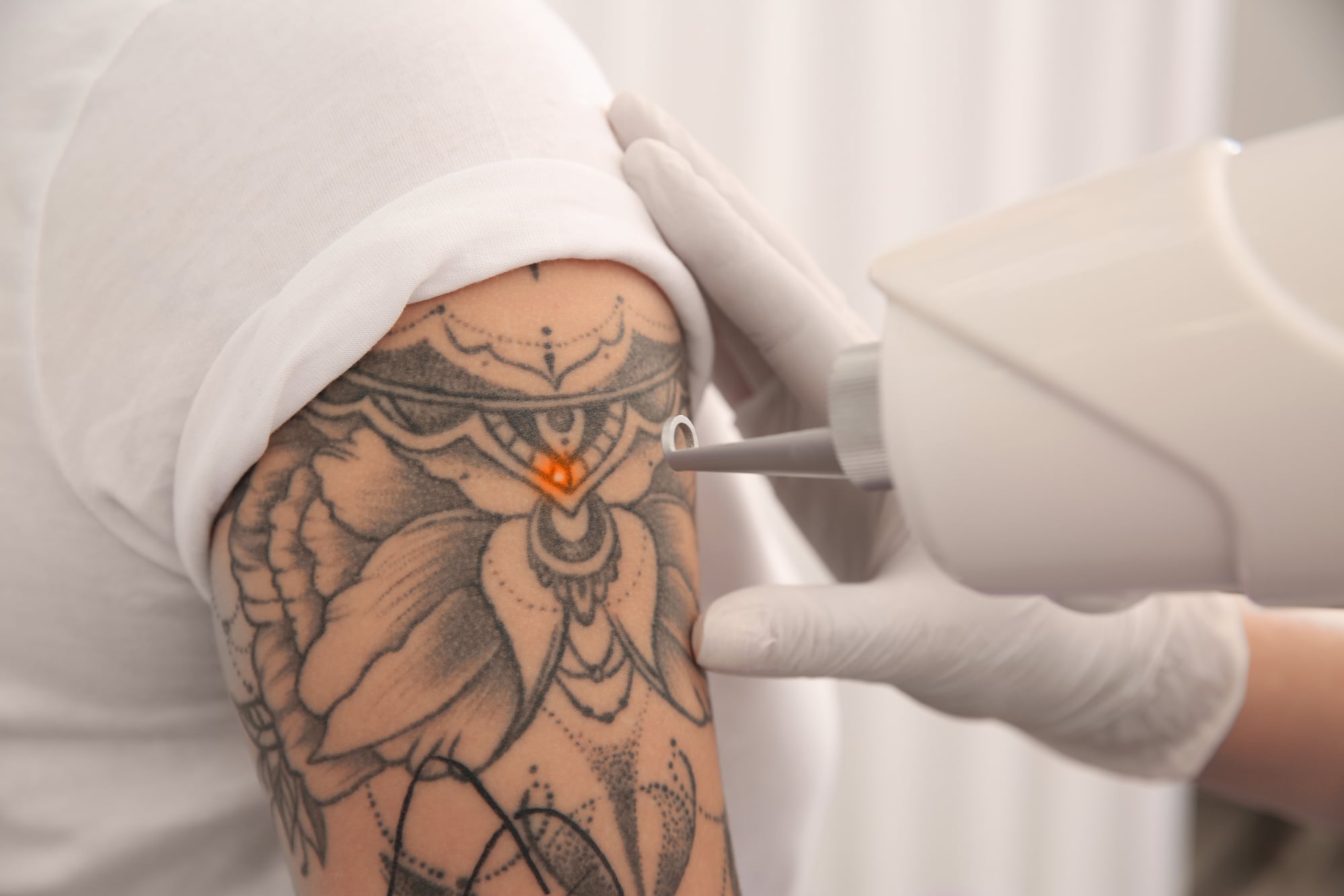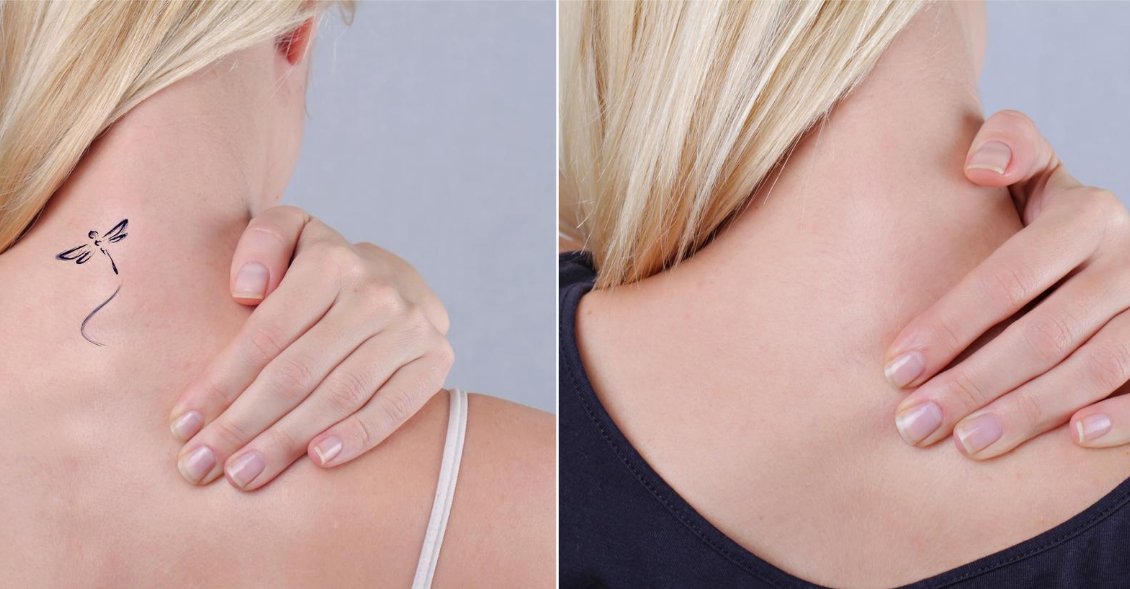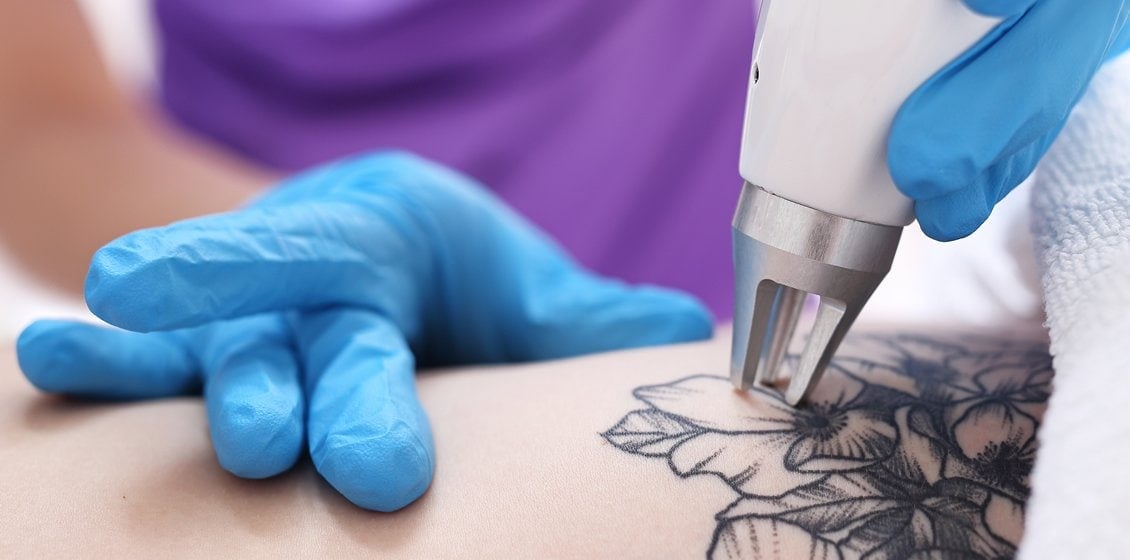Summertime is a season of sun and fun, but it can also pose challenges for those considering laser tattoo removal. Various factors make the summer months a less-than-ideal time to undergo the procedure. This article will discuss the reasons why laser tattoo removal is more difficult in the summer and provide recommendations for both clients and practitioners to navigate these challenges effectively.
Table of Contents
Why Laser Tattoo Removal Is a Challenge in the Summer
Laser practitioners should not advise clients to begin laser tattoo removal during the summer for several reasons:
Less Contrast between Skin Tone and Tattoo Ink
Laser tattoo removal is less effective in the summer because sun exposure causes the skin to produce melanin, resulting in a tan. Tanned skin has additional pigment, making the laser removal process more challenging as it targets both the tattoo ink and melanin. This leads to extra removal sessions and potential skin damage. To maximize tattoo removal success, it’s best to have a skin tone close to its natural state, enabling fewer treatments and better results.
May Delay Laser Treatment Sessions
Sunburn, peeling skin, or blisters from sun exposure can delay treatments as practitioners cannot perform laser removal on damaged skin.
Complications for Healing
The heat from the laser remains in the skin for a few days after treatment, and sunburned skin is already experiencing trauma. Sun exposure after treatments can cause blistering and increase the risk of hypo/hyper-pigmentation, negatively impacting the healing process.
Higher Risk for Scarring
Treating sunburned skin with a laser will further injure the skin and increase the risk of complications. Even tanning, without indications of sunburn, can lead to skin irritation, peeling, and blistering during laser treatment, resulting in potential scarring.
Swimming Is Not Recommended
Swimming or submerging the treated area in water increases the risk of infection. It is best to avoid water activities for at least 72 hours after treatment.
Laser Tattoo Removal Is a Gradual (Not Beautiful) Process
Laser tattoo removal is a gradual process that requires multiple sessions, usually scheduled 10 weeks apart. During this time, the tattoo will fade and may not look aesthetically pleasing. Opting for treatments during winter allows people to easily cover the tattoo with clothing and keep the fading process hidden from view.
Hair Removal Limitations
Post-treatment care for laser tattoo removal involves avoiding shaving, waxing, or plucking hair around the treated area to prevent scabbing or blistering. This restriction is easier to manage during winter when people typically have less concern about maintaining smooth skin on areas like legs, chests, and bikini lines. They can comfortably cover these areas with clothing without attracting attention in colder weather.
Related article: Best Practices for Laser Tattoo Removal.
When Is the Best Time for Clients to Begin Laser Tattoo Removal?
The best time to begin laser tattoo removal is during the fall or winter months. This is because there is less sun exposure and people generally wear more clothing, which makes it easier to keep the treated area covered and protected. Additionally, it is more comfortable to avoid activities like swimming or sunbathing during these cooler months, reducing the risk of potential complications and aiding in the optimal healing of the treated area.
What to Advise Clients During the Summer
Although the summer months are not a good time for clients to begin the laser tattoo removal process, you likely have some clients who have already started sessions for tattoo removal and want to continue the process despite the heat. So, here is what you should advise clients undergoing laser tattoo removal during the summer to follow these guidelines:
- Stay out of the sun before laser treatment: Protect the treated area from the sun for at least six weeks before treatment. Avoid tanning, including sunbathing, tanning beds, and fake tanning products prior to laser sessions. These can react poorly with lasers and cause irregular pigmentation.
- Avoid delaying laser treatment through good skin care: Do not get a spray tan or show up with sunburn for a laser tattoo removal session as it can lead to complications or require rescheduling.
- Don’t go swimming after laser treatments: Refrain from swimming while undergoing treatment to reduce the risk of infection. Wait a few days after treatment and until redness or blisters have healed before entering the water.
- Use sunscreen – always! Apply quality sunblock daily, especially on the treated area. Wear breathable clothing that covers the skin for added protection.
- Moisturize skin treated with lasers: Keep the treated area moisturized with products like Aquaphor or Vitamin E ointment when spending time outdoors.
- Sweating is ok: Do not worry about sweating as being active is essential for healing and helps the body remove broken-down ink particles.
- Protect skin by covering up: Cover the treated area with non-restrictive clothing, as tight garments can impede healing and cause skin damage.
- Stay out of the sun after laser treatment too: Wait at least four weeks after treatment before exposing the skin to the sun. Limit sun exposure to 10 minutes at a time and reapply sunscreen every 2 hours.
By following these guidelines, clients can minimize the risks and ensure the best possible results for their laser tattoo removal during the summer months.
Related article: How to Safely Provide Laser Hair Removal During the Summer.
While the summer months present some obstacles to successful laser tattoo removal, clients and practitioners can still achieve satisfactory results by following the advice outlined in this article. Staying vigilant about sun protection, maintaining good skincare practices, and being aware of the limitations during the summer season will ultimately lead to a successful and smooth laser tattoo removal experience. As always, a thorough consultation with a qualified laser practitioner is essential to ensure the most suitable approach for each individual client.
Tips for Laser Practitioners – Follow Laser Service Solutions
Follow us on Facebook and LinkedIn to get ongoing support and advice on how to grow your medspa business and best care for your clientele.




